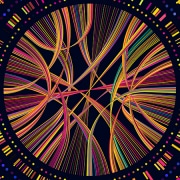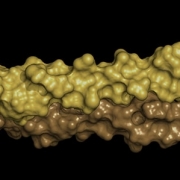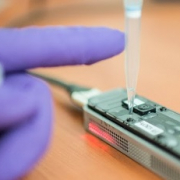How has whole genome sequencing transformed the investigation of rare disease?
The way in which rare diseases are investigated has been opened up by whole genome sequencing. We look at its impact on both clinicians and patients
Whole genome sequencing (WGS) is a technology that theoretically enables us to look at all the genes in a genome simultaneously and that has revolutionised how rare diseases are investigated.
What is WGS?
The technology that underlies WGS is massively parallel sequencing. In WGS, almost the whole genome is sequenced: some parts of the genome are more difficult to sequence so are not routinely included in a whole genome sequence.
Although the majority of the whole genome is sequenced, it is typical for only a subset of the data to be analysed based on what is considered clinically relevant to the patient. For a whistle-stop tour of WGS from sample to report, watch this short animation.
Simultaneous, not sequential, gene sequencing
Prior to the advent of massively parallel sequencing, genetic testing was costly and time consuming, with genes typically investigated sequentially, one at a time.
For clinicians, deciding which gene to test first was a challenge. Things could be straightforward if they were able to recognise the features of a genetic condition caused by a variant in a single gene; however, it was trickier if a condition was potentially caused by variants in more than one gene.
It was routine to start by testing the gene that was the most common cause for the condition, wait a few months for a result and then, if the result was negative (which it usually was!), test another gene. This process would then be repeated until a positive result was confirmed, or all avenues had been exhausted.
Patients with rare diseases commonly describe this journey towards a diagnosis as a ‘diagnostic odyssey’. Often spanning years, and sometimes decades, for many it was a journey without a destination.
While the diagnostic odyssey is by no means a thing of the past, the ability to perform rapid testing has significantly improved the ability to diagnose genetic conditions in a timely fashion. Rather than test for one condition at a time, tens, hundreds or even thousands of conditions can be tested for simultaneously.
WGS testing: A new approach
When approaching WGS-based testing, typically the clinician assesses the patient to determine which genes could be relevant to their phenotype and requests that a virtual gene panel be applied by the lab to the WGS data, focusing on the genes that are likely to be of interest.
With this agnostic approach, it is critical that the evaluation of the phenotype is undertaken by someone who is familiar with the condition, as this is a crucial step in the consideration of a variant’s pathogenicity.
Is more always better?
In a word, no. The type of test that is best – and, in the context of WGS, the scope of analysis undertaken – depends on the individual clinical case.
In some , the clinical features will suggest a particular diagnosis, so it may be more appropriate to undertake a targeted test before testing more widely. There are also some conditions that WGS will not detect that require a specialised, more targeted test.
While casting a wide net can be an effective approach, in general the more agnostic the sequencing the more genomic variants are likely to be found. The more variants found, the longer it can take to analyse them, and the more complex the analysis is.
Agnostic sequencing also increases the likelihood of incidental and uncertain findings.
What does all this mean for patients?
“Patients with rare disease face huge challenges and uncertainties. Diagnosing more patients allows us to offer an explanation, an idea of prognosis, insight into potential complications, reproductive options, better support and potentially treatments.” – Clinical scientist
By testing for thousands of genes simultaneously at a relatively low cost, WGS has enabled both a shorter journey and a greater chance of a diagnosis at the end of it for an increasing number of patients with rare diseases.
It is, however, important to remember that even with today’s technology, it’s not always possible to achieve a diagnosis. But when a genomic diagnosis is available, it not only gives patients a greater understanding of their condition, it can allow them easier access to appropriate support and the ability to plan for the future.









